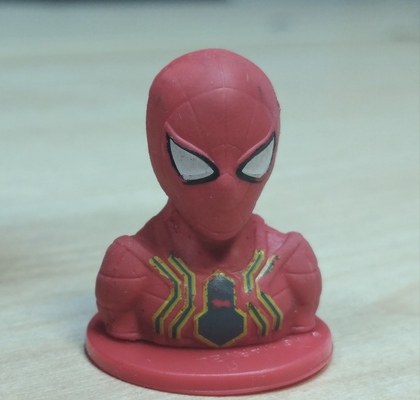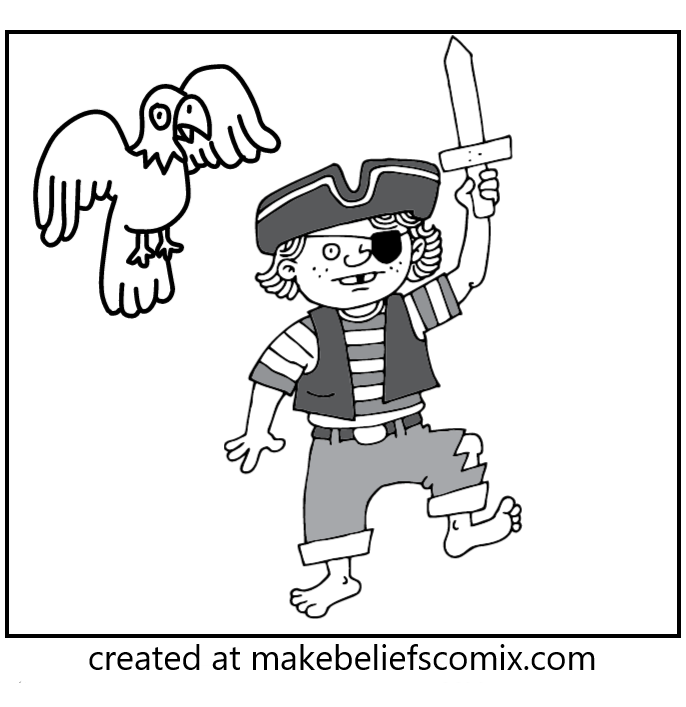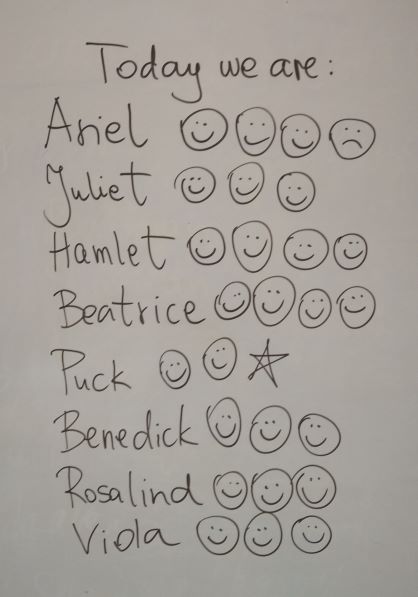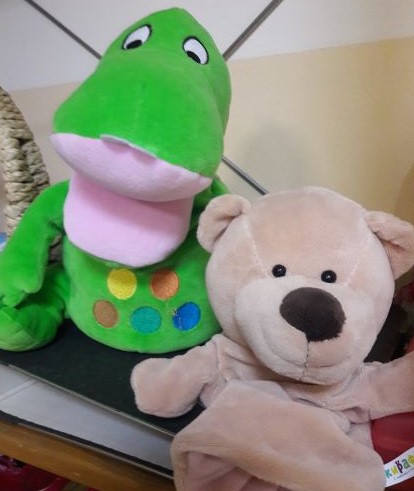
This entry was initially a post on Facebook a year or so ago but the list has got longer and more interesting since. What’s more, what started as ‘a page in the photo album’, almost, with time turned into a reflection on professional life, early years development and its impact on the EFL methodology.
Based on one million true stories. Enjoy?
These are the things that my students brought to their offline or online classes:
- a dead ladybird, handed to me already in the R.I.P state, as the most precious treasure AND a present
- ten plastic jungle animals (all of which participated actively in learning and practising of the new vocabulary)
- a bunch of toy dragons (which were not ‘angry dragons’, as I was assured)
- a toy lion (also very active, answering questions and all that)
- a toy parrot, Pepsi (Pepsi always asked for her own homework handout and always did her homework)
- baby brothers and sisters who wandered in and stayed
- Pasha, the invisible student
- a few cats (purring loudly, only online, though, sadly)
- a puppy (running in and out)
- a hamster
- a plastic shotgun (very realistic, online, yay)
- a toy hen (came to visit and befriend our puppet Angelina, also a hen)
- a broom, Harry Potter-style, wood, twigs and all
- a cape, Harry Potter-style
- a set of cars from the collection
- flowers growing around (online, of course) and, inevitably, …
- a cow, grazing around (online, of course)
- the entire vegetable garden, toured via laptop
- a snail in a jar (online, thank God)
- a sling
- flowers, real, plastic and paper
- slime
- a turn-on/turn-off blinking tiara
- a half-eaten bread roll
- a birthday cake with no prior warning
- a bag of candy to celebrate birthdays, with no prior warning
- a huge alarm clock
- a piggy bank
- and, to finish on the high note, the Black Sea with ships included (in the background of an online lesson)
Why does it matter?
We could look at all these from the angle of the teacher. This teacher is anxious, because, most likely, all these toys and animals will be a nuisance….As a source of excitement (for the owner and for everyone who will want to look and touch and play), a source of annoyance (for the owner, because even the well-meant attention might get unbearable after a while), a source of drama (because toys get lost or misplaced, sometimes), or, simply – a source of distraction. And, if anything can be said about a teacher of very young learners is that they do not need any additional elements that might, potentially, tilt the balance or make waves in the classroom. There is enough, as it it, by default. And that does depend on whether the teacher is experienced or not, working with a group or with individual students, online or offline.
That is why, on seeing yet another dinosaur in the doorway, the teacher sighs, trying to go over all the implications and the impact that the dinosaur’s might have event in the following forty-five minutes. However, this is a very quiet sigh, well-hidden behind a smile and another ‘Oh, wow!’ A very quiet sigh, indeed.
But there are also the kids’ angle. There’s been a birthday or a no-occasion present from gran, an item found in the park, a random and unexpected encounter. There is, finally, an opportunity to show the teacher and the rest of the group, all the treasures and ‘treasures’ that normally stay at home and that mum or gran or nanny stubbornly refuse to carry to school and back, just for the display purposes and which, finally, can be presented to the whole world (as one of the very few bonuses of studying online). Because it is important, right here, right now. Even if to the outside world it looks like a piece or unimportant junk.
For that reason, the kids entering the classroom, will be far from sighing. On the contrary, there will be a lot of joyful feet stomping, the pleasant adrenaline rush, excited whispers in the line in front of the classroom door and then, inevitably, a presentation by a proud and triumphant owner who, for the time being and for the next few minutes, is ruling the world.
The title of ‘The Most Dramatic Entry’ …
…and a proper showcase and a case study that I often present to my trainees, belongs to one big birthday cake, full of cream, sugar and chocolate that was grandiosely marched in, at the heels of a Sasha boy who was turning six on the day. Three minutes before the lesson, without any prior warning, agreement, permission.
You know how they say ‘his heart sank‘? Mine really did, no metaphors. Of course, it was a big day for Sasha. Of course, his mum wanted to include us in the celebrations. Of course, she meant well. Of course, Sasha and all the other kids were ecstatic. I am not a robot myself, I like cake! BUT.
I had three minutes to make a decision and here are the three options that I was considering:
a) Ask the mum to take the cake away. Meaning: Sasha is heartbroken (reason: the teacher is a witch who forbids him to enjoy his day), the mum is offended (reason: see above), the kids are upset (reason: see above), the lesson is in shreds (reason: nobody can focus anyway)
b) Put the cake away on the window-sill and celebrate at the end of the lesson. Meaning: Sasha is distracted (reason: the cake is on the window-sill, this is the only thing that he is capable of thinking of, also probably with time, the classroom fills with the smell of cake), the kids are distracted (reason: see above), the teacher is distracted (reason: see above), the lesson is in shreds (reason: nobody can focus anyway).
c) Eat the cake. Meaning: Sasha is happy and way too energetic (reason: sugar levels are through the roof), the kids are happy and way too energetic (reason: see above), the teacher is in trouble (reason: other parents will complain to the school about the stranger feeding their kids random foods, but at this point the teacher doesn’t know that yet, it is all to happen in the evening and on the following day), the lesson is in shreds (reason: too much sugar, too much energy and the festivities taking place in the start of the lesson. No matter what the teacher prepared for the day (Try to predict THIS in your ‘anticipated problems and solutions’), nothing is going to be able to come even close to the cake. Sigh).
Now, dear reader, please, pause for a minute. Faced with that dilemma, what would you do, I wonder?
I guess, I did know straight away what we would do, I went through the hoops of considering all the other options only to be able to say that I did try to be a reasonable and cool-headed professional. We ate the cake and we sang ‘Happy Birthday’ to Sasha.
Then I tried to save what was left of my lesson and in the following week, I kept myself busy sorting out the complaint from the parents.
Not sure what I would do today, and with my current groups and parents. Maybe it would not even be a problem because, by now, we have managed to negotiate an accepted list of potential English lesson snacks and we always celebrate with Kinder, Barnie and this one brand of juice. It is some kind of achievement, too, I suppose, that when the birthday surprise bags were brought into the classroom I did manage to pull off the ‘let’s-put-it-on-the-top-shelf-we’ll-open-the-bag-when-we-say-goodbye‘ stunt. It might be because I am more experienced and because a more effective set of rules and routines is in place. Perhaps, it’s because we have known each other for a bit longer than with the other group. Perhaps all three?
What to do and what not to do?
Luckily, not all the situations are as dramatic as the Dreaded Cake Day but the teacher still sighs when the (plastic) dinosaurs are arriving.
‘No toys in the classroom‘ is one of the options, of course, especially if agreed previously with the parents, carefully discussed and explained. And with time, children get used to the fact that even if the teddy (or the banana) come to school, they stay in the hallway.
‘Bring it on‘ is another. Turning the tendency into a part of the classroom routine might benefit the lesson and the kids. Bringing toys (or else) can be an opportunity to produce the language as even the youngest kids can answer the questions such as ‘What is it?’, ‘What colour is it?’, ‘What can you do with it?’, ‘Why do you like it?’…
‘They are sleeping‘ could also be an approach. If you have a table or a shelf, all the toys could be welcomed, interacted with and then, after having been granted the permission from the owner, left in this one special place. I am sure that they are tiny and very very tired. Ideally this place is out of reach but visible to everyone (especially the owner:-) and this way, the precious things are there, visible but out of the way.
The shameful thing is, perhaps, the fact that I got bored with both of these approaches. We used to have a beautiful poster in the hallway, in English and in Russian about toys staying behind, but to be honest, I was really more interested in all the treasure (and how a piece of real junk can become ‘my precious’). But I am not into cutting a piece of the lesson every single time and devoting it to random guests, either. Instead, we just mix and match. We always inspect the new arrivals and we look at them (in awe). Sometimes we have a little chat, sometimes not. Sometimes we put them away and sometimes they join as in the circle, to sing a song. Sometimes they play the games with us (which means twice as much production, YAY) but sometimes they don’t and they are just picked up later, already half-forgotten, at good-byes. I guess, I might call it the ‘Go with the flow‘ approach. And this what I preach at the moment.
I will happily blame the pandemic for that attitude. I rule in my little kingdom but it is easier said than done in the online classroom. On the one hand, it is a definite advantage that all these distractors do not physically invade the classroom . On the other hand, no physical presence means no actual control and, there is a lot more potential for the unexpected. No matter how good your lesson planning skills are, try predicting that a student of yours will be sitting outside, in the field, and that cows will be walking past and that, they, too, will become a part of your lesson!
Happy teaching!
P.S. Don’t forget to check out the wonderful directory of all the useful things in the VYL world created by Sandy Millin. You can find it here.





